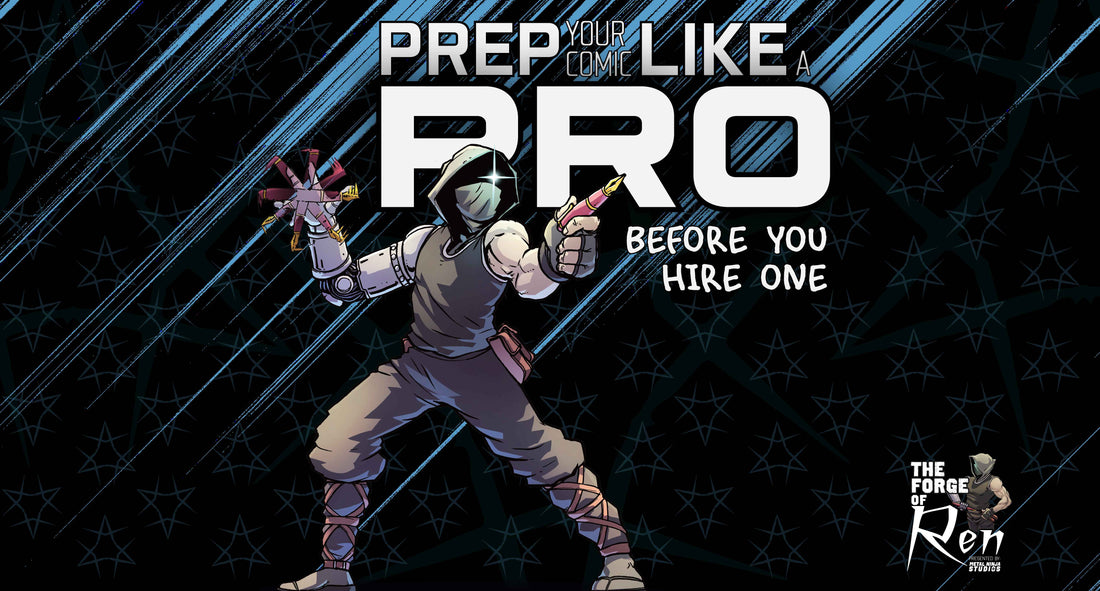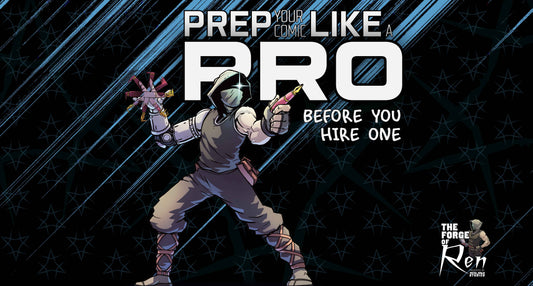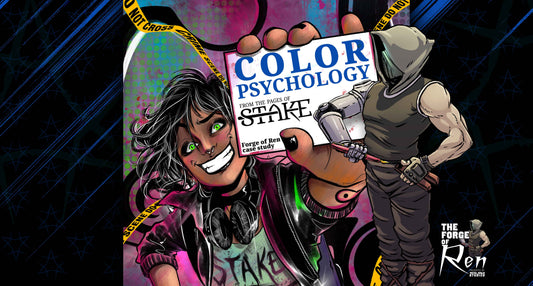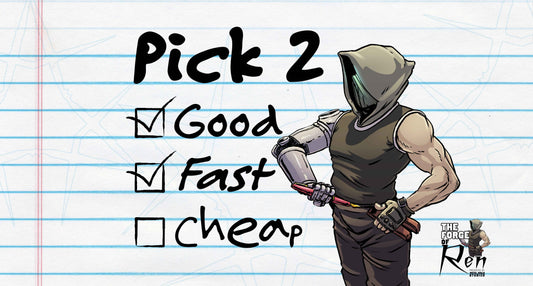Start Smart, Even If You're Not Ready to Spend Yet
You've had this comic idea bouncing around your brain for months—maybe even years. Maybe you've sketched a few characters or jotted down a rough plot. But life, bills, and reality? They're real. You might not have the budget yet to bring on a full production team. And that's okay.
But here's the truth: not being ready to hire a studio doesn't mean you can't start moving in the right direction.
The smartest creators prep before the money shows up. They do the low-cost groundwork now, so they hit the ground running when they're ready to go pro. These five steps will help you set the stage—so when you are ready to partner with a studio like Metal Ninja Studios, your comic is way closer to launch.
1. Refine Your Concept With a One-Page Pitch
Get your concept on one page before anyone dives into full scripting or character sheets. This isn't just for other people—it's for you. Distilling your idea forces clarity.
By condensing everything into a single page, you're forced to understand your story deeply. That clarity becomes invaluable—not just for writing but also for talking about your comic. Whether you're chatting with potential readers, collaborators, or future investors, having a sharp, dialed-in pitch helps you avoid information overload and keeps people hooked.
Include:
- A short logline (what's your story about?)
- The genre and tone
- A brief summary of the main character(s)
- Core conflict or stakes
- Any "comp" titles ("Saga meets X-Men" or "The Witcher meets Blade Runner")
You don't need fancy formatting. You need focus, which will become your compass for everything that comes next.
2. Build a Reference Folder (Visual + story)
Have you ever seen a Pinterest board or a Notion doc that looks like an exploded mood board? That's a good thing.
Start collecting:
- Art styles you vibe with
- Character designs from other media
- Logo ideas
- Panel compositions that jump out at you
- Fonts, color palettes, textures
Here's the truth: there's no such thing as a completely "new" idea. Every story is a remix—a combination of your references and inspirations filtered through your unique life experience. That's where your originality lives.
And while working with an IP Development Studio like Metal Ninja Studios lets you skip years of trial-and-error by leveraging decades of creative experience, a solid reference folder ensures everyone on your team clearly understands what makes your vision unique. It's the fastest way to align a creative team around your story's style, energy, and heart.
Use Google Drive, Dropbox, Trello, Milanote—whatever works for you. Personally, I use a combination of Miro and Notion: Miro helps visualize interconnectivity between ideas, while Notion lets me explain the details behind each one. The point is to start externalizing your taste. Later, this becomes gold for communicating with project managers, writers, designers, and illustrators.
3. Read Comics Like a Creator, Not Just a Fan
This one sounds obvious, but most folks miss it. When you read as a fan, you're soaking up story. When you read as a creator, you're breaking down how the story is built.
Grab 2–3 issues of comics in your genre and study them. Ask:
- How are pages paced?
- Where do page turns hit?
- How much dialogue is on a page?
- How are emotions shown visually?
Want an insider shortcut? Check out our post on Mastering Page Turns for real tips from the production room.
4. Learn the Big Picture of Comic Production
You don't need to become a master of every discipline—but understanding how the comic-making process works from end to end will make you a far stronger creator.
Take time to study the basics of writing, editing, penciling, inking, coloring, lettering, and production formatting. You don't have to do all these things—but learning what each role does (and how they work together) helps you communicate clearly with your team in the future.
You'll ask better questions, give more useful feedback, and spot red flags before they become costly mistakes. You're not just prepping to make a comic but to lead a team.
This approach is what separates chaotic DIY experiments from professional-grade storytelling.
5. Connect With Other Creators and Watch How They Move
You don't have to go it alone, even if you're not hiring a team yet. Study how others are doing it. Follow creators you respect. Check out interviews, social posts, and portfolio breakdowns.
Look for:
- How they pitch their comics
- How they describe their creative process
- What platforms do they use to share their work
This is passive learning that pays off big. You'll pick up language, habits, and expectations that help when you eventually team up with a studio.
Conclusion: Prep Now, Go Pro Later
There's a ton you can do right now that costs little to nothing—and still puts you miles ahead. By refining your idea, collecting references, studying comics like a builder, learning the full production process, and watching experienced creators, you're laying the groundwork for future success.
So when that budget is ready, you won't be starting from scratch. You'll be ready to build something incredible with a team that gets it.
And if you want that team to be us, we’ll be here. Book a free consultation or learn how our Concept to Comic™ service can bring your vision to life.





